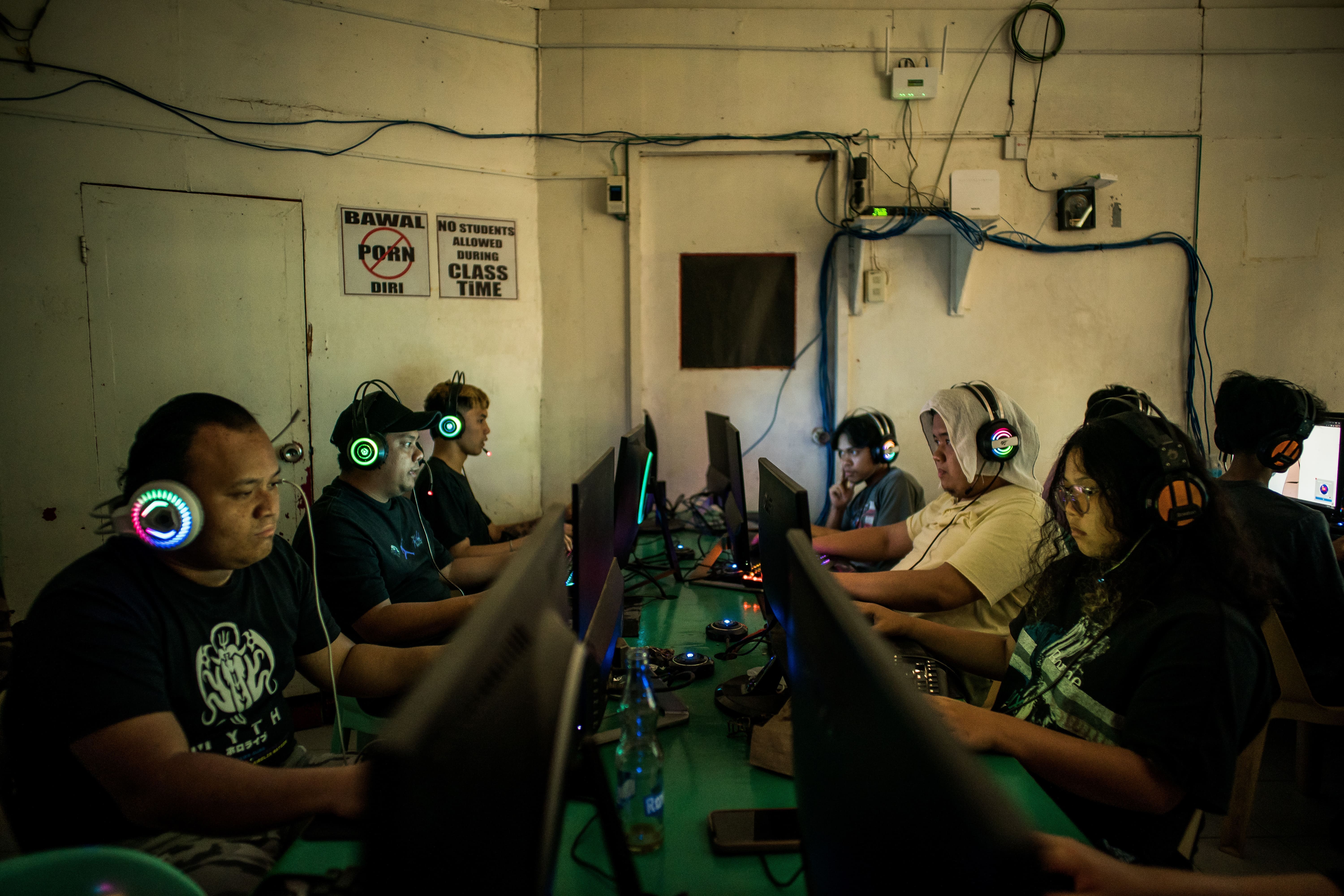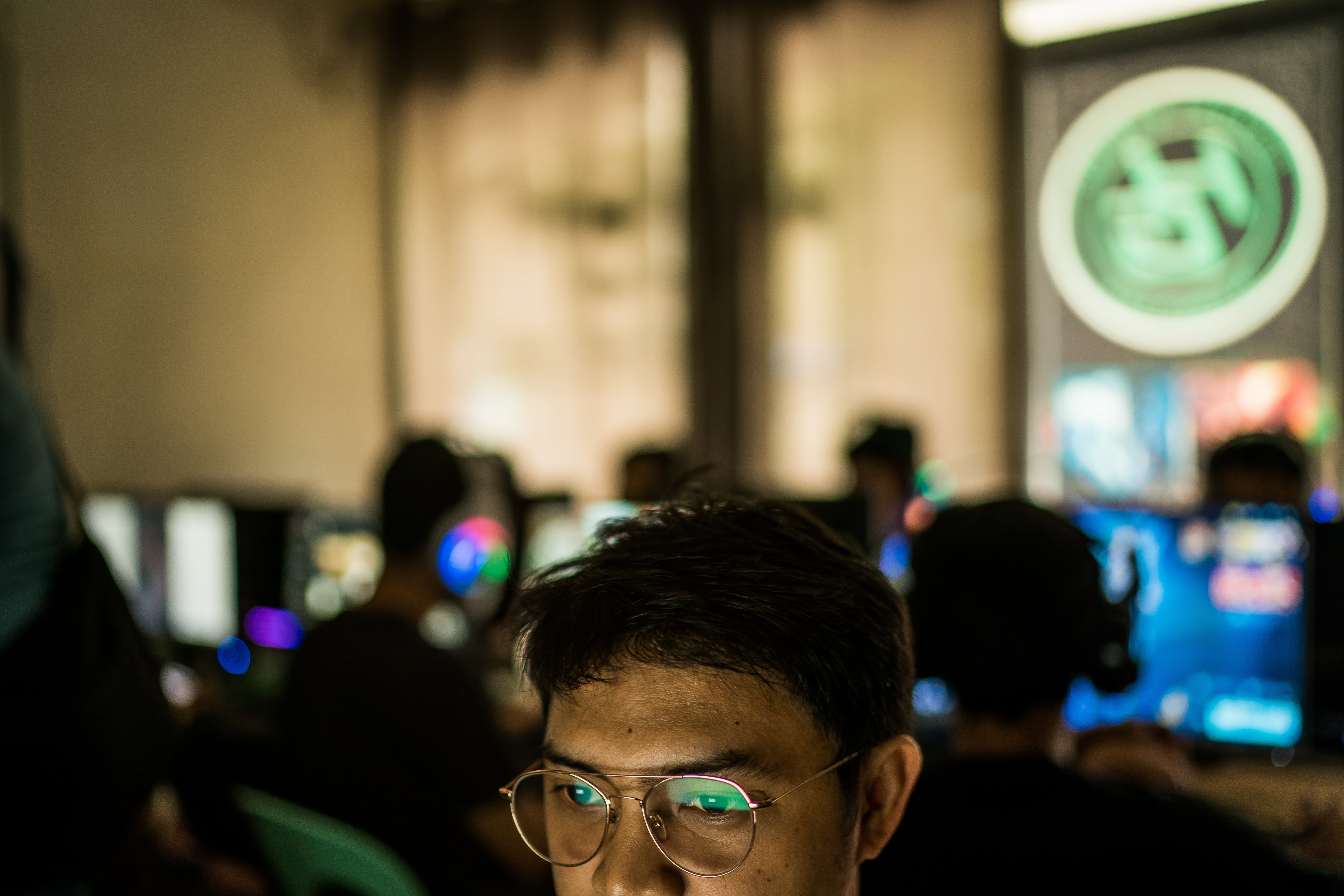Behind the AI boom, the armies of overseas workers in ‘digital sweatshops’
Thousands of young workers log online everyday in the Philippines to support the ever-growing business of artificial intelligence, Rebecca Tan and Regine Cabato investigate

In dingy internet cafes, jam-packed office spaces or at home, they annotate the masses of data that American companies need to train their artificial intelligence models. The workers differentiate pedestrians from palm trees in videos used to develop the algorithms for automated driving; they label images so AI can generate representations of politicians and celebrities; they edit chunks of text to ensure language models like ChatGPT don’t churn out gibberish.
More than 2 million people in the Philippines perform this type of “crowdwork”, according to informal government estimates, as part of AI’s vast underbelly. While AI is often thought of as human-free machine learning, the technology actually relies on the labour-intensive efforts of a workforce spread across much of the global south and is often subject to exploitation.
The mathematical models underpinning AI tools get smarter by analysing large data sets, which need to be accurate, precise and legible to be useful. Low-quality data yields low-quality AI. So click by click, a largely unregulated army of humans is transforming the raw data into AI feedstock.
In the Philippines, one of the world’s biggest destinations for outsourced digital work, former employees say that at least 10,000 of these workers do this labour on a platform called Remotasks, which is owned by the $7bn San Francisco start-up Scale AI.
Scale AI has paid workers at extremely low rates, routinely delayed or withheld payments and provided few channels for workers to seek recourse, according to interviews with workers, internal company messages and payment records, and financial statements. Rights groups and labour researchers say Scale AI is among a number of American AI companies that have not abided by basic labour standards for their workers abroad.
Of 36 current and former freelance workers interviewed, all but two said they’ve had payments from the platform delayed, reduced or cancelled after completing tasks. The workers, known as “taskers,” said they often earn far below the minimum wage – which in the Philippines ranges from $6 to $10 a day depending on region - though at times they do make more than the minimum.

Scale AI, which does work for firms like Meta, Microsoft and generative AI companies like Open AI, the creator of ChatGPT, says on its website that it is “proud to pay rates at a living wage.” In a statement, Anna Franko, a Scale AI spokesperson, said the pay system on Remotasks “is continually improving” based on worker feedback and that “delays or interruptions to payments are exceedingly rare”.
But on an internal messaging platform for Remotasks, which The Washington Post accessed in July, notices of late or missing payments from supervisors were commonplace. On some projects, there were multiple notices in a single month. Sometimes, supervisors told workers payments were withheld because work was inaccurate or late. Other times, supervisors gave no explanation. Attempts to track down lost payments often went nowhere, workers said – or worse, led to their accounts being deactivated.
Charisse, 23, said she spent four hours on a task that was meant to earn her $2, and Remotasks paid her 30 cents.
Jackie, 26, said he worked three days on a project that he thought would earn him $50, and he got $12.
Benz, 36, said he’d racked up more than $150 in payments when he was suddenly booted from the platform. He never got the money, he said.
Paul, 25, said he’s lost count of how much money he’s been owed over three years of working on Remotasks. Like other current Remotasks freelancers, Paul spoke on the condition that only his first name be published to avoid being expelled from the platform. He started “tasking” full time in 2020 after graduating from university. He was once excited to help build AI, he said, but these days, he mostly feels embarrassed by how little he earns.
“The budget for all this, I know it’s big,” Paul said, staring into his hands at a coffee shop in Cagayan de Oro. “None of that is trickling down to us.”
Much of the ethical and regulatory debate over AI has focused so far on its propensity for bias and potential to go rogue or be abused, such as for disinformation. But companies producing AI technology are also charting a new frontier in labour exploitation, researchers say.
Initially, taskers said, they could earn as much as $200 in a week. Then in 2021, around the time Remotasks expanded to India and to Venezuela, pay rates plunged, according to workers and screenshots of project assignments
In enlisting people in the Global South as freelance contractors, micro-tasking platforms like Remotasks sidestep labour regulations – such as a minimum wage and a fair contract - in favour of terms and conditions they set independently, said Cheryll Soriano, a professor at De La Salle University in Manila who studies digital labour in the Philippines. “What it comes down to,” she said, “is a total absence of standards.”
Dominic Ligot, a Filipino AI ethicist, called these new workplaces “digital sweatshops”.

Presented with The Post’s findings about Remotasks, government officials in the Philippines said they were alarmed but admitted they weren’t sure how to regulate the platform. The Department of Information and Communications Technology, which regulates the tech industry, said it wasn’t aware of how much workers make on micro-tasking platforms. Data annotation is an “informal sector,” said department head Ivan John Uy. “Regulatory protective mechanisms are not there.”
Overseas outposts
Founded in 2016 by young college dropouts and backed by some $600m in venture capital, Scale AI has cast itself as a champion of American efforts in the race for AI supremacy. In addition to working with large technology companies, Scale AI has been awarded hundreds of millions of dollars to label data for the US Department of Defense. To work on such sensitive, specialised data sets, the company has begun seeking out more contractors in the United States, though the vast majority of the workforce is still located in Asia, Africa and Latin America.
Remotasks says on its website it has more than 240,000 taskers. But speaking to CNN in June, Alexandr Wang, Scale AI’s 26-year-old chief executive, declined to confirm how many people label data for his company, saying only that he believes in AI that “enables the collective expertise of as many people as possible.”
People in the Philippines started working for Remotasks as early as 2017. In 2019, the company incorporated a legal entity in the country called Smart Ecosystem Philippines Inc. (SEPI), according to business registration documents. A year later, when the pandemic sent droves of workers home, Remotasks exploded in popularity.
In the southern region of Mindanao, where decades of political unrest have left economic opportunities lacking, young people gathered at internet cafes to work on the platform or were recruited by SEPI to work at crowded offices leased from local businesses.
In Cagayan de Oro on Mindanao’s northern coast, SEPI has enlisted freelancers to work in at least seven locations. These included a room above a computer equipment store, a narrow five-story building where some 900 taskers worked in shifts and the corner unit of a strip mall, still adorned in July with banners advertising an “official training boot camp” for Remotasks. In 2021, according to financial statements, SEPI paid more than $2m in rent in the Philippines.
Franko, the Scale AI spokesperson, said the company set up SEPI to operate Remotasks in the Philippines, but she declined to provide further details about SEPI’s operations.
Initially, taskers said, they could earn as much as $200 in a week. Then in 2021, around the time Remotasks expanded to India and to Venezuela, pay rates plunged, according to workers and screenshots of project assignments. Filipino freelancers went from earning $10 per task on some projects to less than 1 cent, according to a former SEPI staff employee who spoke on the condition he be identified by his nickname, Doy, to avoid retribution from the company.
By auctioning off work globally, Remotasks has created a “race to the bottom” for wages, said the owner of an outsourcing firm that has worked with SEPI. “It’s vicious competition,” said the owner, who spoke on the condition of anonymity to protect business interests.
Raising complaints
When freelance workers complete a project, it goes through several levels of review before it’s evaluated by teams in the United States, taskers said. If the work is approved, payments are supposed to be credited to workers through platforms like PayPal. But sometimes payments are withheld with no explanation, taskers said. And if the work is rejected, they said, the freelancers can be asked to redo the tasks, be given a “compensation” rate as low as 2 per cent of the original payment or not be paid at all.
“If you complain and raise your voice just a little, you get deactivated,” said Joseph, a Cagayan de Oro tasker. In 2020, he said, he confronted his project supervisor about the number of tasks he’d completed without receiving payment and was locked out of his account the next day.
Doy, who until recently worked as one of several hundred salaried employees at SEPI, said he and other staff have for years raised the taskers’ complaints to company managers and Remotasks executives. Sometimes, Remotasks executives would instruct SEPI employees to tell freelancers that the company was working on resolving the payment issues even if it never was, Doy said. Other times, the executives would tell SEPI employees to direct freelancers to the Remotasks help centre, though it was well-known, he said, that “filing a ticket” went nowhere.
Franko said the company provides “multiple channels for questions and support”, including trained specialists who review and respond to pay disputes.
‘We don’t have a choice’
Last year, the Oxford Internet Institute, which scores digital work platforms on labour standards, highlighted Scale AI for “obfuscating” its labour process. In its assessment this year, the institute, part of Oxford University, gave Remotasks a score of 1 out of 10, failing the company on key metrics including its ability to fully pay workers.
Oxford researcher Jonas Valente said Scale AI profits by offering clients high-quality data while relegating much of the responsibility and cost of quality assurance to individual taskers. In its terms and conditions, Remotasks says it “reserves the right” to withhold payment, remove freelancers from projects or deactivate their accounts for work deemed inaccurate. This “non-specified” set of rules, Valente said, lets the company decide if and when it wants to pay them for work even after it’s already been done.
Franko said the company was “disappointed” in the Oxford report. “At Scale, data annotation has always been designed as flexible, gig-based work,” she said. “We’re proud of the work opportunities provided on Remotasks.”
Labour groups in the Philippines blame the government for not regulating platforms like Remotasks. But officials say they worry about stifling such a new industry. Studies by online payment companies and the International Labor Organization (ILO) show that online freelance work is growing faster in the Philippines than almost anywhere else.
Globally, the data collection and annotation industry is expected to reach $17.1bn by 2030, according to Grand View Research, a market forecaster. According to a 2021 ILO study, the vast majority of online freelance work in the world is performed by workers in the Global South, nearly half in India and the Philippines alone.
Monchito Ibrahim, a former undersecretary for the Philippine Department of Information and Communications Technology, said micro-tasking “can’t be our future”.
For young people in places like Mindanao struggling to find work, there are few alternatives. Scale AI can exploit Filipino workers, said Philip Alchie Elemento, 37, an ex-tasker, “because they know we don’t have a choice”.
In July, Paul, the tasker from Cagayan de Oro, said he’d made up his mind to quit Remotasks. He was fed up with not getting paid and anxious about how much he was drawing down on his savings. “I know I deserve much better,” Paul said. A month later, he was still at Remotasks. He wanted to leave, Paul said. He just didn’t know where else to go.
Join our commenting forum
Join thought-provoking conversations, follow other Independent readers and see their replies
Comments